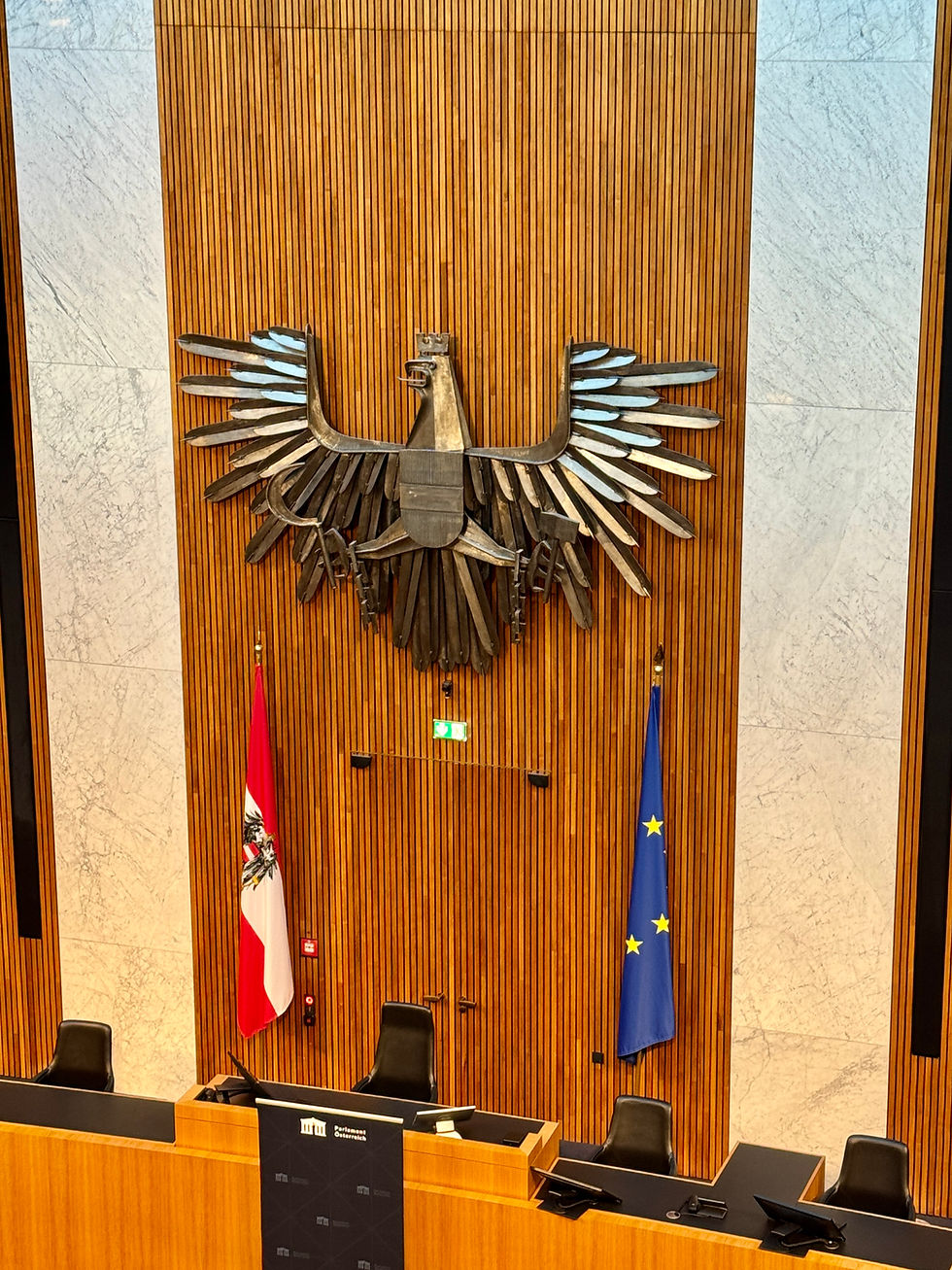Klimt Villa - His Life and Works with Sad Stories about His Famous Paintings and Their Models
- Mika Vepsalainen
- Nov 19, 2022
- 4 min read
Updated: Apr 19, 2023
Join us for a visit to Klimt’s villa in Vienna where he painted a large number of his most famous works - many of which had a sad story afterwards!

Villa Klimt is the last studio where the probably most known father of the Viennese Art Nouveau, painter Gustav Klimt worked from 1911 until his death in 1918.
The two-storey Neo-baroque villa is located in the heart of Hietzing, a sleepy residential area in Vienna's 13th Bezirk. A bit surprisingly, the current villa was built after Klimt’s death but it actually swelled Klimt's small summerhouse-cum-studio. You can still see the walls of the original house inside the villa, reconstructed based on original photos. The renovation added a whole new storey and a flight of steps in the "Rosenkavalier style", which was widespread among the Viennese Jewish upper middle class at the time.
One reason for Klimt’s renting in Heazing might have been that his new studio was only a stone’s throw away from the painter studios of his friends Egon Schiele and Felix Harta. Actually it was Harta who recommended to Klimt that he should rent the simple country house with high windows from a furniture manufacturer, Josef Hermann whom Harta apparently knew. Klimt wrote on 26 August 1911 to the Viennese address book publisher Lehmann: "My present address is 'Gustav Klimt, painter, XIIIth, Feldmühlgasse 9, no longer VIII Josefstädterstr. 21'." - where his garden pavillion had been from 1892 onwards.
Klimt worked on more than 50 paintings in Hietzing including some of his world-famous pieces such as Adele Bloch-Baure II, Friederike Beer, The Bride and Adam and Eve. It was there, too, where he did his last brushstrokes on paintings that he never finished.
After Klimt’s death, the Hermanns started expanding their house and somewhat later in 1923, the Klein family bought the house and completed it. Being Jews, the Kleins were forced to flee the Nazi Austria in 1939 and although they got the house back in 1945, they sold it to the Austrian state in 1957 for 500,000 shillings. The state used it for a school and added terrible modern ground-level building in the compound.
In 2007, the Belvedere Galerie took over the museum but did not take care of the villa. Hence, in 2008, the Ministry of Economy ruled against the Belvedere's project to restitute the old one-storey building and transferred the building to the Kuratorium für künstlerische und heilende Pädagogik (Comenius Institute) provided that the former Gustav Klimt studio rooms be made accessible to the public as a memorial.
In 2012 the house was renovated to mark the Klimt Year and the ground floor was restored as it was before the 1922-23 additions. The unique room-in-room structure allowed to preserve Klimt's studio and reception room which are now the main features of the exhibition at the Klimt Villa. Photos from 1918 and some original objects were used for the reconstruction of the furnishings.
The museum has a very nice special feature for visitors: thanks perhaps to the limited number of visitors, all guests are offered a short introduction in person before they move on to to explore the museum on their own. Do not forget to ask for it if the personnel does not offer it automatically, it gives a lot of additional insight in to the building and Klimt's time there!
Klimt is a leading figure in the Austrian art history and his works of art are world famous. The museum also tells the sad story of some looted art and disappeared works, histories about collectors, perpetrators, victims and Klimt's works lost during the Nazi era that are rarely discussed publicly. The exhibition in the Klimt Villa poses the question of how to deal with the loss, which goes far beyond individual works of art allowing us to get a whole new perspective. There is also ample information on models and clients that were important for Klimt and his work. You might also wish to check our related Klimt reviews in the Oberes Belvedere and the Secession museums. In 1963, the Albertina started research on Gustav Klimt’s drawings. The research project Gustav Klimt. Die Zeichnungen has resulted by now in the examination and scientific classification of over 4300 works by Gustav Klimt.
Klimt's works and their history is told in interesting glass plates on which the black German text sticks out well. Unfortunately, the white text in English is not very easy to see.
Klimt had designed the garden himself and he loved it so much that he wanted to paint it in many works. You can easily walk around the house after your museum visit. From May to September, there is also a summer café in the garden.
The reception area includes a large museum shop with a myriad of Klimt inspired gift items and books, definitely a must for any friend of Klimt and Art Nouveau.
The garden and the original Klimt studio in the ground floor are fully accessible and there is a very good loo for disabled visitors. Unfortunately, the first floor of the villa that was built after Klimt’s time and where the events and concerts are organised, can only be reached by stairs and is thus not accessible.
Klimt Museum
Feldmühlgasse 11, 1130 Wien (13. Bezirk)
www.klimtvilla.at












































Comments